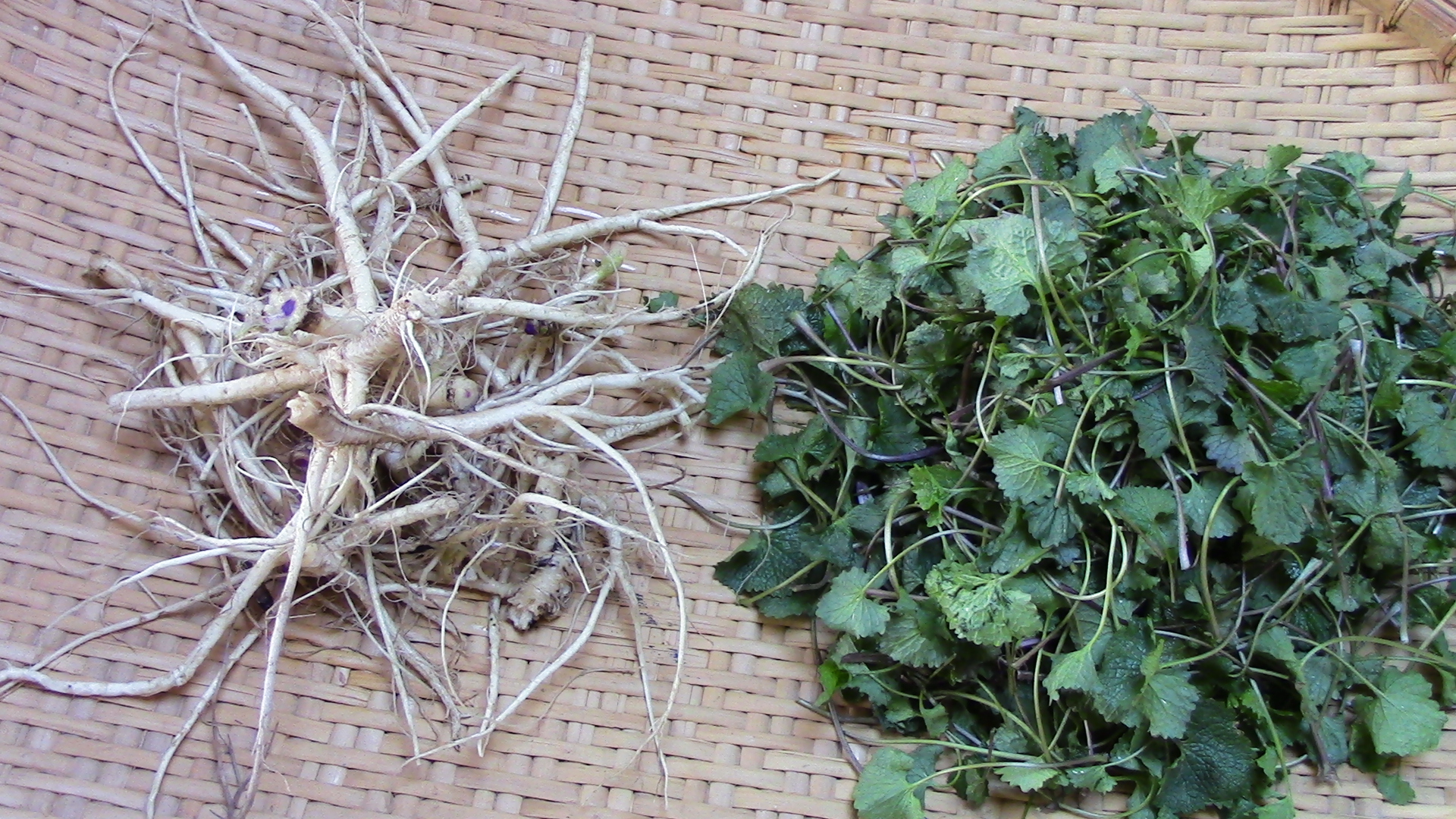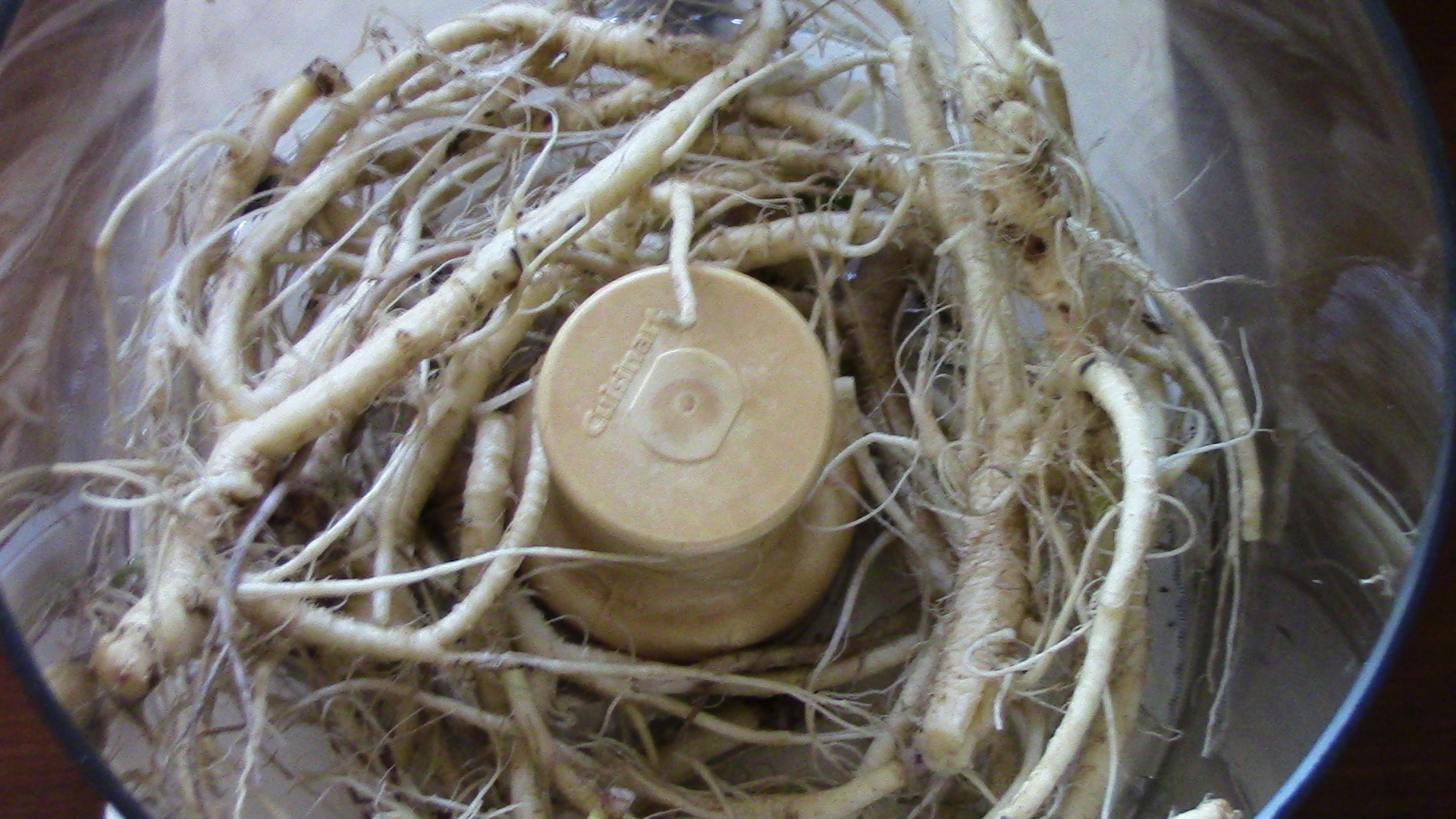Wondering what to do with all that garlic mustard? Why not dig it up and make wild-style horseradish with it! This plant, scientifically named Alliaria petiolata, is referred to as an invasive species. So if you'd like to control it — unearth it and eat it. The roots have a similar flavor to horseradish, pungent and slightly bitter — not surprising, as the two plants belong to the Brassicaceae family aka mustard family. In the basket is the whole plant ready to be processed.
To make wild-style horseradish cut the greens off of the roots. Reserve greens and use in other recipes such as broiled-crispy (see below), salad, or wild green pesto. Wash the roots thoroughly and dry well. Remove any woody parts — this afternoon I was in a rush and didn't take the time to perform this step. This results is a slightly more pithy/ fibrous consistency. Place roots in the food processor. Puree until well grated. Then for every cup of grated root (which weighs about 4 oz.), add 1/2 cup organic apple-cider vinegar and 1/2 teaspoon of sea salt to the grated roots in the food processor. Blend ingredients for a minute or so. Eat right away or store in the refrigerator in a tightly lidded container.
Garlic Mustard Beet Variation
Garlic Mustard Beet Variation: If you like you can add beet root to the mix. This will make the condiment sweeter and of course deeply red. Once all the ingredients have been well blended, add the beet (chopped into small pieces). Use 4 oz. of beet per cup of wild style horseradish. And again puree everything in the food processor until the beet is finely ground. Enjoy!
Broiled-Crispy Garlic Mustard Greens: If you are feeling invaded by garlic mustard, I recommend eating them broiled — they taste amazing and you can and will eat a lot of them this way. Spread the leaves out, not too thickly, on a baking pan. Coat the leaves well with olive oil and tamari. Put the pan about 4 inches below the oven flame (which is an open flame with a broad spread). Once the leaves have cooked through and are somewhat crispy they are ready. This can happen quickly, so stay by the oven.
Garlic Mustard in basal rosette stage, a perfect time for making wild-style horseradish with the root. Image from our book Foraging & Feasting: A Field Guide and Wild Food Cookbook by Dina Falconi; illustrated by Wendy Hollender. http://bit.ly/1Auh44Q
Garlic Mustard Plant Identification page from our book Foraging & Feasting: A Field Guide and Wild Food Cookbook by Dina Falconi; illustrated by Wendy Hollender. http://bit.ly/1Auh44Q







